#fossil tortoise
Explore tagged Tumblr posts
Text






21.4" Fossil Tortoise (Stylemys) - South Dakota
#oligocene#stylemys#south dakota#fossil tortoise#tortoise#tortoise shell#png#transparent#paleontology#prehistoric#paleoblr#fossil#fossils#fossilized
13 notes
·
View notes
Text

It’s a stupendous Fossil Friday! Let’s celebrate with Stupendemys geographicus, the “stupendous turtle.” This reptile lived during the Late Miocene some 5 million years ago, and it’s one of the largest turtles to have ever existed. Scientists think this giant’s carapace could grow up to 7.9 ft (2.4 m) long and that it could weigh up to 2,524 lbs (1,145 kg). Stupendemys geographicus is a pleurodire, or side-necked turtle, closely related to the living Podocnemis genus. No skull of Stupendemys has ever been found. The sculpted skull used in this exhibit is based on that of another very large pleurodire thought to be related to Stupendemys. See it up close in the Hall of Vertebrate Origins! Plan your visit.
Photo: © AMNH
#science#amnh#museum#fossil#nature#natural history#animals#fact of the day#paleontology#did you know#turtles#tortoise#herpetology#natural history museum#museum of natural history#american museum of natural history#cool animals#miocene#fossil friday
1K notes
·
View notes
Text


Another Saturday another formation stream!
This time we visited the subfossil wonders of Madagascar!
#sciart#paleoart#paleostream#holocene#pleistocene#madagascar#elephant birds#aepyornis#lemurs#crocodile#megaladapis#tortoise#fossils
449 notes
·
View notes
Text

Megalochelys atlas | micron pen and color pencils | December 2023 | Hazel Fricke
400 notes
·
View notes
Text





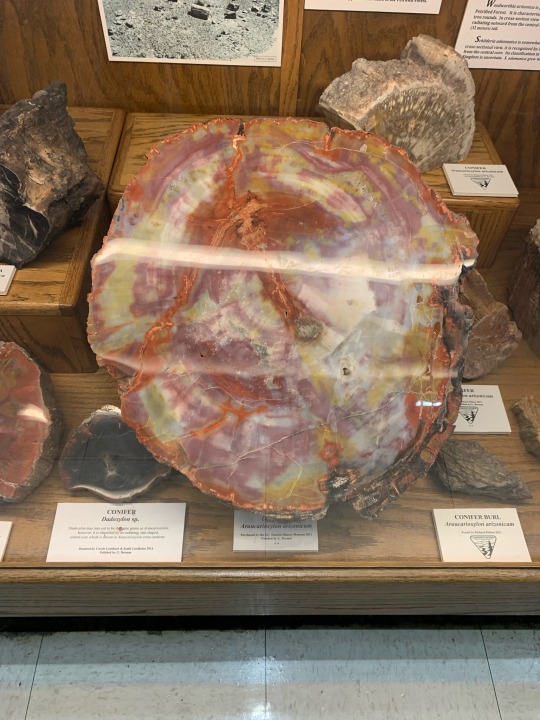
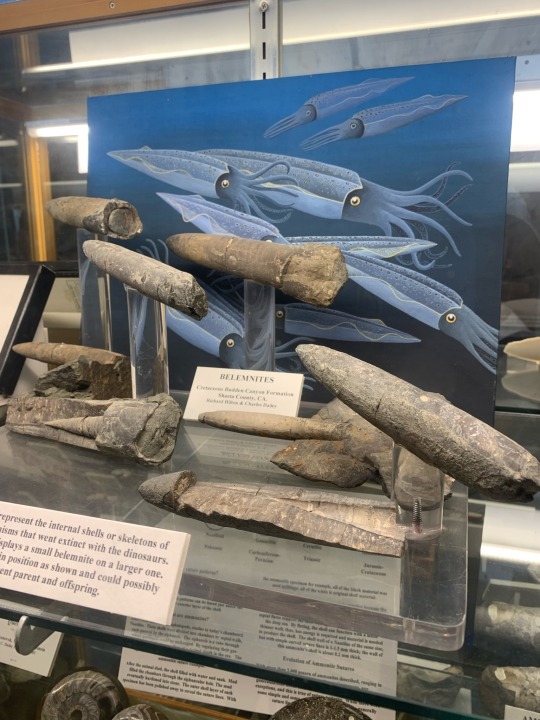

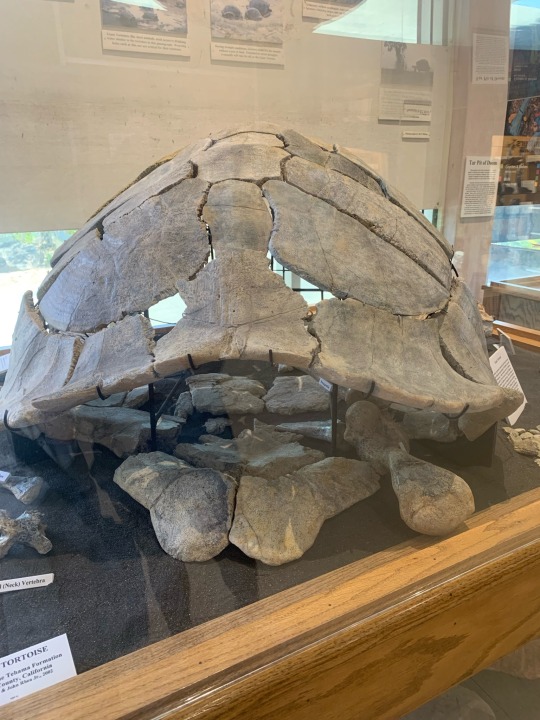

Fossils from the Sierra College Natural History Museum, part 2
104 notes
·
View notes
Text
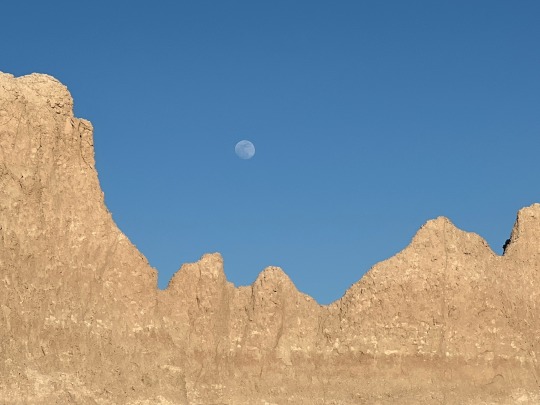



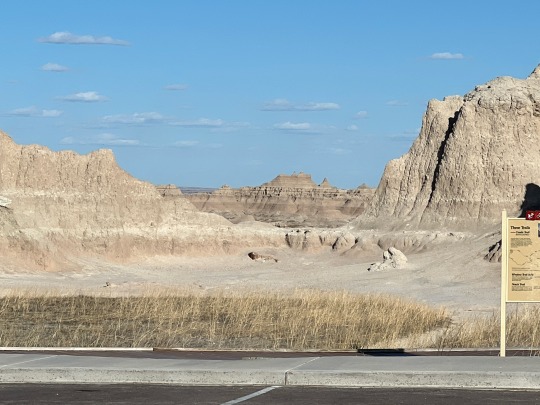
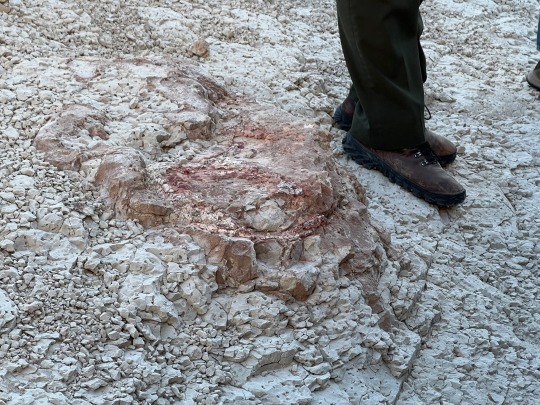
Wagoo!
'Badlands? I think they're quite 'good' actually.'
#the last picture is a fossilized tortoise that a ranger showed me#from a trip i was on for a geology class last semester
7K notes
·
View notes
Text
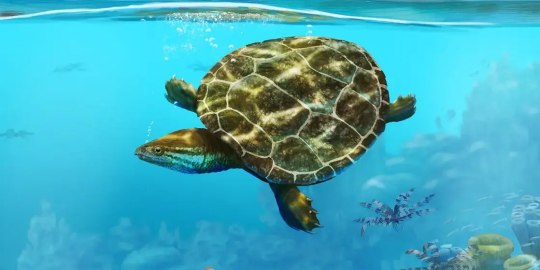
Solnhofia
Solnhofia — рід вимерлих таласохелідових черепах з пізньої юри Німеччини. Типовий вид — Solnhofia parsonsi, названий Гаффні (Gaffney) в 1975 році за частковим черепом і щелепою з раннього титону з формації Зольнхофен в Баварії.
Повний текст на сайті "Вимерлий світ":
https://extinctworld.in.ua/solnhofia/
#solnhofia#germany#jurassic#bavaria#gaffney#late jurassic#paleoart#jurassic period#reptiles#tortoise#reptilia#sea#ua#paleontology#prehistoric#extinct#fossils#article#digital art#sciart#палеоарт#ukraine#ukrainian#україна#мова#тварини#черепаха#українська мова#арт
1 note
·
View note
Text

Panochthus tuberculatus was a large glyptodont – a group of giant heavily-armored armadillos – that lived in central and southern South America during the late Pleistocene, about 800,000-12,000 years ago.
Around 3.5m long (~11.5') and 1.5m tall (~5'), it was similar in size to a modern rhino (or a small car), and its large domed "shell" made up of numerous small bony osteoderms made it resemble a mammalian tortoise. Its skull was short and deep, with ever-growing grinding teeth and downwards-flaring cheekbones that anchored powerful jaw muscles. A preserved hyoid apparatus indicates that Panochthus also had a more flexible tongue than some other glyptodonts.
The base of its tail was segmented into rings that allowed it to flex, while the end of the tail was fused into a solid bony tube that was probably studded with large keratinous knobs or spikes.
While these sort of tail weapons in glyptodonts have been proposed as being anti-predator defenses, biomechanical studies suggest they required precise aiming to be most effective and weren't well-suited to fending off fast-moving attackers. Instead they may have been more specialized for fighting each other in ritualized forms of combat – an idea supported by injuries in fossil carapaces that appear to have been caused by blows from opponents' tail clubs.
———
NixIllustration.com | Tumblr | Patreon
References:
Blanco, R. Ernesto, Washington W. Jones, and Andrés Rinderknecht. "The sweet spot of a biological hammer: the centre of percussion of glyptodont (Mammalia: Xenarthra) tail clubs" Proc. R. Soc. B. 276 (2009): 3971–3978. https://www.academia.edu/download/71293979/The_sweet_spot_of_a_biological_hammer_th20211004-20926-1xg5uwp.pdf
Luna, Carlos A., et al. "Memories of the blows: severe soft-tissue injuries in caudal vertebrae of Panochthus Burmeister (Xenarthra, Glyptodontidae)." Journal of Mammalian Evolution 31.3 (2024): 29. https://doi.org/10.1007/s10914-024-09729-0
Lima, F.C.G., Porpino, K. & Ribeiro, A.M. "Trauma-induced alterations in the exoskeleton of glyptodonts (Cingulata, Xenarthra) associated with fighting behavior." Journal of Mammalian Evolution 32, 9 (2025). https://doi.org/10.1007/s10914-025-09750-x
Wikipedia contributors. “Glyptodont” Wikipedia, 25 May 2025, https://en.wikipedia.org/wiki/Glyptodont
Wikipedia contributors. “Panochthus” Wikipedia, 02 Jun. 2025, https://en.wikipedia.org/wiki/Panochthus
Zamorano, Martín, and Richard A. Fariña. "Changes in form and function of the caudal tubes in Panochthus (Xenarthra; Glyptodontidae) along the Pleistocene." Historical Biology 34.12 (2022): 2265-2272. https://www.researchgate.net/publication/357020158_Changes_in_form_and_function_of_the_caudal_tubes_in_Panochthus_Xenarthra_Glyptodontidae_along_the_Pleistocene
Zamorano, Martín, et al. "Hyoid apparatus of Panochthus sp. (Xenarthra; Glyptodontidae) from the Late Pleistocene of the Pampean Region (Argentina). Comparative description and muscle reconstruction." (2018). Neues Jahrbuch für Geologie und Paläontologie - Abhandlungen 288.2 (2018): 205–219. https://ri.conicet.gov.ar/bitstream/handle/11336/97007/CONICET_Digital_Nro.bcac99f6-b327-435a-bca7-137dfd6af700_D.pdf?sequence=5
#science illustration#paleontology#paleoart#palaeoblr#panochthus#glyptodont#glyptodontinae#chlamyphoridae#cingulata#armadillo#xenarthra#mammal#art
258 notes
·
View notes
Text
World-Building Guide to Deserts

A desert is a vast biome that is known for its extreme temperature. Deserts can either run hot or cold and are usually difficult to inhabit. But deserts are harsh places but they are visually stunning and make for an impressive backdrop to any story.
What is it like in the Desert?
Like I said, deserts are hot or cold. The temperatures are extreme which limits the amount of vegetation which in turn limits the coverage one can get in a desert, leaving the area very exposed to the elements. Rainfall is limited, well below average which means only very durable vegetation and wildlife can survive. It is a harsh landscape but it has its own beauty. The desert can often be very quiet with the limited wildlife and people around.
Hot Deserts

Features of Hot Deserts
Sand Dunes: These are hills made of sand, shaped by the extreme winds.
Plateaus: These are flat areas, usually of rock that have very little vegetation or cover.
Salt Flats: Large areas of salt deposits
Playa Lakes: Temporary lakes that appear during heavy rainfall
Oases: Small areas within the desert that have fertile soil and flourish with vegetation due to a water source.
Canyons: Are deep valleys of rock formed from rivers long dried up or greatly reduced.
Sedimentary Layering: Striped rock that shows off the different layers of rock giving the desert a striped appearance.
Mesas: A mesa is flat elevation of steep sides.
Inselbergs: Isolated rock formations that jut up from the desert floor, formed out of soft rock.
Yardangs: Ridges of rock formed by wind erosion
Mushroom Rocks: Pillars of rock formed over time with bigger heads than their bases
Rocks Commonly Found in Hot Deserts
Quartz: Clear/white/pink and usually smoky or clouded. Quartz feels very smooth like glass and may look like crystal.
Sandstone: Tan/red/yellow/brown-ish in colour. Made of compacted sand, it feels very coarse.
Limestone: Grey/white. Rough to touch and often featuring fossils.
Gypsum: White/Clear/Pink/Grey. Soft with chalk-like texture.
Salt Crystals: White/Clear. Crystal-like.
Meteorites: Often found in deserts. Usually black/grey. Can be both rough or smooth to touch.
Common Plants in Deserts
Prickly Pear Cactus: Greed, waxy pad-like cacti with spins. They grow red/yellow fruit that are edible.
Mesquite Trees: Small twisting trees. The pods are edible.
Agave: A thick-leafed succulent, shaped like a rose full of nectar and water.
Oleander: A shrub with pink or white flowers. Not edible, poisonous.
Chia Seeds: Tiny seeds that are edible.
Date Palms: Tall with long sweeping fronds. The dates are edible.
Jojoba: A shrub that's seeds are edible.
Desert Mallow: Flowering plant of pink blossoms. The leaves and flowers are edible.
Peyote: Small round cactus. Do not eat.
Creosote Bush: A shrub with waxy leaves that can be eaten.
Common Wildlife in a Hot Desert
Snakes
Small rodents
Foxes
Raptors (the birds of prey not the fun kind)
Beetles
Scorpions
Locusts
Coyotes
Camels
Lizards
Tortoises
Surviving a Hot Desert
Shelter: It is imperative to stay out of the direct sun if possible to conserve energy.
Keep an eye out: In the shade, there are other creatures who want to get out of the sun. Venomous snakes, scorpions and other critters could be lying in wait so it is best to make sure your shelter isn't already occupied.
Travel: Moving when it is sunrise or sunset or night is best as it isn't as hot and you waste less energy.
Water: Limit water intake in case your character doesn't reach a water source soon. If there are cactus around, your character may find water within it.
Know your plants: Your character might feel the urge to eat any vegetation they come across if they are hungry and weary. There are edible plants in the desert but there are also poison ones. Your character shouldn't eat any strange plant without knowing what it is.
Getting help: Signalling using something reflective or creating a large symbol might signal for help from above.
Clothes: A character should remember that the desert is hot and dress accordingly. Light, loose clothing is best but the nights in a desert are extremely cold. If your character is modifying their clothes, make sure they remember this.
Cold Deserts

Features of Cold Deserts
Ice Sheets: Unbroken sheets of permanent ice.
Glaciers: Immense sheets of moving ice.
Permafrost: The ground that remains frozen all year round. It is barren and nothing can grow here.
Icebergs: Vast lumps of ice that break off from larger sheets of ice to float in the ocean (and kill Leonardo DiCaprio)
Rocky Outcrops: Exposed rock formations.
Crevasses: Deep cracks in ice sheets and glaciers, very dangerous.
Seracs: Ice formations created where multiple crevasses meet.
Erratics: Large rocks deposited by glaciers seemingly in the middle of nowhere.
Rocks Commonly found in Ice Deserts
Basalt: Grey/Black. Smooth.
Granite: Grey/Pink/White. Coarse to the touch.
Shale: Grey/Black. Smooth and brittle.
Gneiss: Striped with greys/pinks/white. Rough texture.
Schist: Silvery-green. Flaky and layered.
Till: Of many colours. Rough.
Common Vegetation found in Ice Deserts
Lichens: Crusty spots that grow on ice and rocks. Can be edible.
Mosses: Soft green plants that grow in the damp. Some kinds are ok to eat.
Arctic Willow: A shrub. Edible.
Saxifrages: Flowering plants growing in rocky areas. Some are edible.
Bearberry: A shrub. The berries are edible.
Grasses: Grow in tundra areas. Edible.
Wildlife Commonly Found in the Ice Desert
Bears
Foxes
Wolves
Deer
Elk
Walrus
Moose
Reindeer
Seals
Whales
Ice worms (the spice must flow....)
Rodents
Surviving in an Ice Desert
Clothing: Wearing layers is crucial. Base layer, insulation and a waterproof layer. Boots and gloves are a must. But you should dress to be sweating, it is a waste of energy. Stay dry always.
Shelter: You can find or build shelter, especially if the winds are high. If sleeping on the ground, use insulation.
Food/Water: Melting snow and ice is fine, eating snow is bad because it will lower your core temp. The best food to eat in this weather is high in fat to keep your body working to keep warm.
Keeping an eye out: Ice fields can break apart easily, crevasses are lethal.
Flag for help if lost: Flares or fires can attract help so always carry something to spark up a flame or two.
#worldbuilding#worldbuilding guide#worldbuilding reference#worldbuilding resource#worldbuilding guide to deserts#writing#writeblr#writer#spilled words#writer's problems#writing advice#writer's life#writing resources#writing reference#worldbuilding help#writing help#creative writing#wtw#wtwcommunity
376 notes
·
View notes
Text
Thank you @narwhalsdisguised for your donation to Mahmoud's fundraiser! Here are some fun facts about coelacanths:
Like tortoises, coelacanths are extremely long lived. Individuals don't reach sexual maturity until they're around 50, and most can live up to 100!
In fact, coelacanths take their time with just about everything- including pregnancy. Females gestate their young for 5 years, and can carry anywhere from 8 to 26 offspring.
Coelacanths are ovoviviparous, meaning they retain fertilized eggs inside their bodies until they hatch, and then give birth to live young!
Thanks to their three pairs of fins, which are extremely flexible, they can swim in almost any direction- including doing headstands and swimming upside down!
Coelacanths were thought to have gone extinct at the same time as the dinosaurs, around 65 million years ago
In 1938, they were re-discovered by a woman named Marjorie Courtenay-Latimer, who was the curator of the East London Museum in South Africa. Bonus fun fact: she finished writing the paper detailing the species' rediscovery only 4 days before giving birth to her son!
Although coelacanths can grow to be 1.8 m (5.9 ft) long, their brains only take up 2% of their cranial cavity!
Their large size also means that coelacanths have the largest eggs of any fish species, coming in at 9 centimeters (3.5 inches) in diameter and weighing over 325 g (0. 7lbs)!
Most fish have swim bladders filled with air, which helps them to float or sink as needed, but the swim bladders of coelacanths are filled with fat!
Two other characteristics that give the coelacanth the nickname 'living fossil' are the presence of a "rostral organ" in the snout that is part of the electrosensory system, and an intracranial joint or "hinge" in the skull that allows the top portion of the skull to swing upwards and the mouth to open much wider than other fish; neither feature is found in any other living vertebrate!
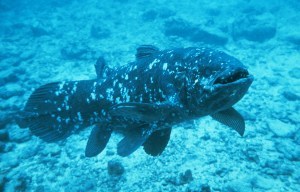
(Image: An African coelacanth (Latimeria chalumnae) by Peter Scoones)
#coelocanths#Coelacanthiformes#Latimeriidae#lobe-finned fish#fish#uncharismatic facts#fauna for palestine
127 notes
·
View notes
Text


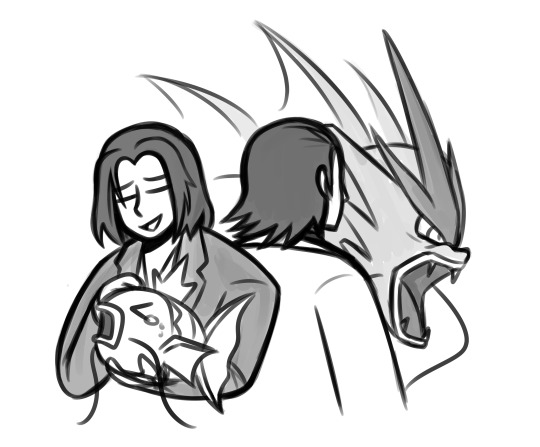
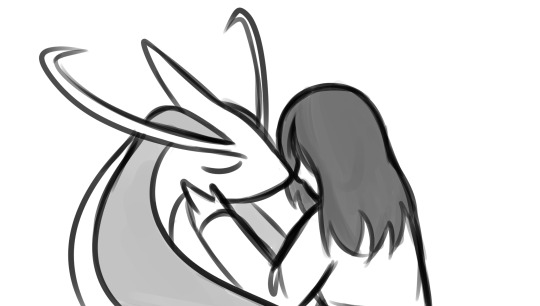

okay that's great and all but hear me out. what if they had pokemon. [id in alt, more under the cut!]
hi. (wearing a shirt that says "ask me about my yakuza pokemon au" but i'm looking in a mirror so i just start going nuts right off the bat)

woah it's some guy with a dragon tattoo!! lotsa dragons, lotsa fighters, and of course THE parent pokemon!! the zangoose is part of a matching set with majima's seviper, naturally. also it matches his autism stare. blaziken's there out of respect for nugget.
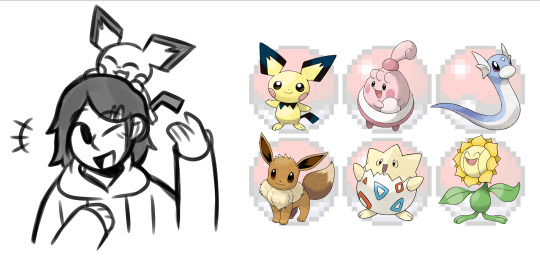
GO GO HARUKA!!! lotsa baby pokemon when she's younger :] the pichu turns into an idol pikachu mainly because i wanted something for her that'd fall in line with that but i also think igglybuff is ugly. sorry. happiny's there in particular because of the crazy eldest daughter syndrome she catches from y3 onwards LOL. that caretaker role hit her hard. sorry girl.

seviper's part of the matching set with kiryu's zangoose, naturally :] plus it fits the snake thing he's got going on with his tattoo. also some dogs!! specifically some fucked up ones!! also did you know froslass only goes after men it thinks is handsome. yeah.
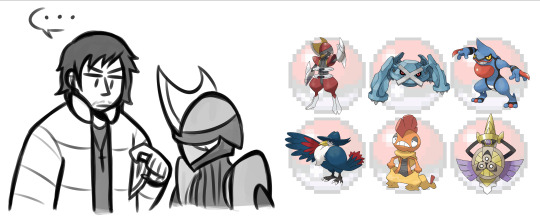
daigo's so funny in y2 imo. aegislash is there in particular because it detects innate qualities of leadership!! anyway that bisharp becomes a kingambit when he's chairman (thumbs up!!)

tiger man gets the tiger man. cat. lots of big burly guys for the big burly guy. etc etc. i like that his training in y4 is just to go mining so i HAD to have at least one fossil mon. hi bastiodon!!!
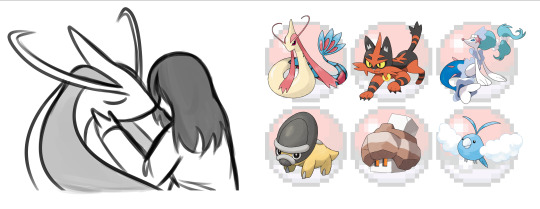
yasuko's getting hit with the one-two of Beauty(TM) and Small(TM) versions of what her older brother's got :']
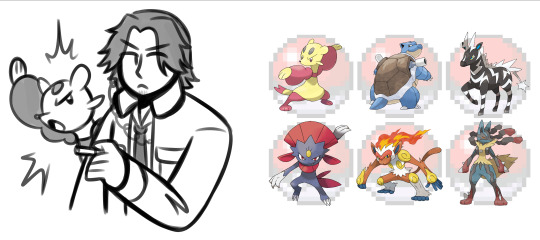
tanimura gets a lot of fighty guys, in particular i tried to find ones that sorta fit with the little asia stuff he's got going on. blastoise is there because of the tortoise thing and he's got a gun so ??? actually i might switch blastoise out if i end up exploring this au more LOL and zebstrika's there because he's a horse girl <3

akiyama!! a bunch of kicky guys to fit his fighting style and talonflame because of his phoenix thing. audino because he's the lifeline of kamurocho :]

hana!! why does she not have a last name!!! anyway lotsa guys to match her fighting style :]

magikarp -> gyarados is literally THE most obvious thing to pick out for nishikiyama but if it works it works!!!
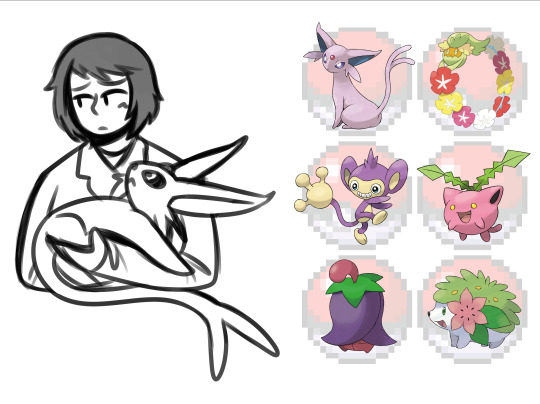
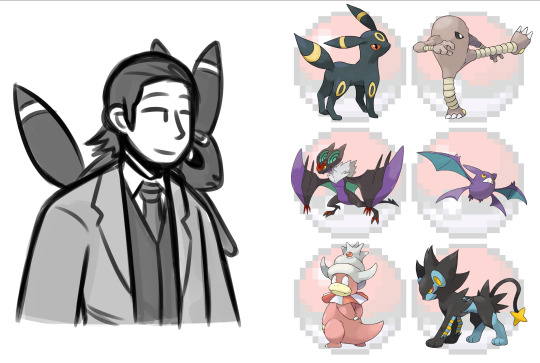
makoto and tachibana get a matching set of eeveelutions :] i think a shaymin shows itself before makoto either when she gets her watch back or when she gets the new watch strap
i'm not 100% sure for most of these teams if anyone wants to share their own ideas i'm all ears!!
anyway yeah. hi. thanks for checking this out ily <3 (is still wearing the "ask me about my yakuza pokemon au" shirt and but i am now looking directly into your eyes)
#the brainrot's gotten REAL bad... i had to give them beasts... unbelievably self-indulgent#contra art#yakuza#pokemon#rgg#ryu ga gotoku#kiryu kazuma#majima goro#haruka sawamura#daigo dojima#akiyama shun#masayoshi tanimura#hana#yasuko saejima#saejima taiga#makoto makimura#tetsu tachibana#akira nishikiyama#yakuza fanart#rgg fanart
375 notes
·
View notes
Text
okay. red and green (unnamed cerdae) were protectors of this massive underground tree that grew at the death site of a terra tortoise aaages ago. they were essentially progens and protectors of a small village that was around it, and were like. minor deities. over time the dragons began to abandon the tree to live upon the surface (as early post-pillar-break tensions between the eleven settled), but red and green couldnt go far from their tree, alone save for what terra tortoises still live in the area, and each other of course. (warning: not scientificaly accurate) over time as leylines changed the great tree began to fossilize, inducing a torpor in its cerdae. the tree petrified, its guardians fell into a deep sleep, their pearls lost over the years. when the leylines shift once more, it traces a path beneath the tree, and as it has done with the bones in the cairnstone rest the tree is given new life--and its cerdae awake. but they are much, much stranger now.
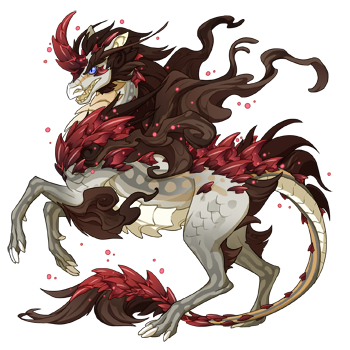
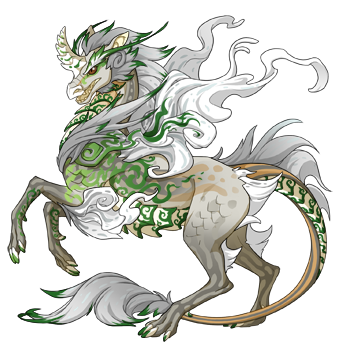
#scribes#flight rising#pearl cerdae#and then osmund finds them and the tree#and the tortoises#and is like wow what a monumental find for archeobiology!#shame he cant tell anyone bc the cerdae think hes cute and want to smooch him.#and he doesnt want his grandma to get mad but he Does want smooches#anbar#silas
63 notes
·
View notes
Text

Paleo-Files: Nuralagus rex
Nuralagus rex, which was described in 2011 from fossils found on the Balearic island of Minorca, is the largest and heaviest rabbit species of all time, with a height of just over 50 cm and a weight of around 8-12 kg. This Rabbit-King of Minorca had short, splayed-out limbs, its reduced sensory receptors indicated that it had smaller eyes and ears than other rabbits and thus poor senses of sight and hearing, and its short, stiff spine resulted in low mobility for the giant rabbit and prevented it from running or jumping like other leporids. The females reached sexual maturity at 3.6 years and were larger than the males, which sexually matured at 6.2 years. Nuralagus rex was part of a host of strange animals that colonized Minorca and the other Balearic Islands during the Pliocene and Pleistocene. When the Messinian Salinity Crisis that began around 5.96 million years ago and ended with the Zanclean Flood 5.3 million years ago caused the Strait of Gibraltar to close as a result of tectonic or glacial changes, the resulting desiccation or drying-up of the Mediterranean Sea enabled a land bridge of deserts and salt flats to form between the Iberian Peninsula and the Balearic Islands. This witnessed an ensuing invasion of hardy animal settlers that were quick to adapt to the changing insular conditions, including a bunch of rabbits that took advantage of Minorca‘s abundant greenery and lack of predators and evolved into the Rabbit-King as a result of island gigantism. Nuralagus rex shared its habitat with the giant dormouse Muscardinus cyclopeus, the large tortoise Solitudo gymnesica, geckos, snakes, worm-lizards, alytid frogs, and lizards that were related to modern geckos and lacertids. When lower sea-levels began to connect the coasts of Majorca and Minorca at the start of the Pleistocene, the Minorcan Nuralagus rex faced competition with the Majorcan goat Myotragus and was soon driven to extinction.
#nuralagus rex#rabbit#pliocene#cenozoic era#cenozoic#paleontology#paleoart#palaeontology#palaeoart#palaeoblr#paleography#palaeontography
37 notes
·
View notes
Text
Working With Forfax

The Components Master
Other names: Foras, Forcas, Phorcas
Enn: "Kaymen Vefa Forfax On Ca"
Rank: President
Colors: Deep green, dark orange, gold, white
Herbs: Sage, century plant, mugwort, Dittany of Crete, American mandrake, wormwood, bay, Solomon's seal, eyebright, frankincense, myyrh, lungwort, hemlock, rue, borage, burdock, angelica, agrimony, calendula, dill, goldenrod, yarrow, fleabane, holy basil
Crystals: Clear quartz, copper jadeite, emerald, sapphire, labradorite, fluorite, green amethyst, tourmaline, mahogany obsidian, rutilated quartz, green kyanite, serpentine, apophyllite, moldavite, seraphinite, chrysocolla malachite
Element: Earth, Air
Planet: Mercury, Saturn
Zodiac: Virgo (Capricorn)
Metal: Gold, meteorite, lead, mercury
Tarot: The Hermit, The Magician
Direction: North
Dates: January 20th - 29th, August 23rd - 27th
Day: Wednesday
Animals: Tortoises, owls, stags, snakes, salamanders
Domains: Herbalism, herbal magick, crystal magick, alchemy, magickal objects/tools, spell crafting, invisibility, escape, finding lost objects, revealing secrets, logic, rhetoric, eloquence, physical fortitude, longevity, hearth magick, wild magick, foraging, navigating the wilderness, adventure, knowledge passed on, books and written instruction, magickal forging
Offerings: Foraged herbs, rare plants/crystals, stones, magickal objects, grimoire pages, spell components, written incantations, vintage keys, pressed flowers, oils, wands, knives/athames/bolines, salts, sacred dirt, old coins, fossils, bones, eye glasses or magnifying lenses, pins/trinkets/charms, green tea (hot)
Sigils:


#Forfax#Foras#Forcas#demon#demons#demonolatry#witchblr#satanism#witchcraft#dark#satanic witch#lefthandpath#magick#witch#spirit#spirit work#esoteric#herbalism#herbs#crystals#wand#athame#foraging#hearth magic#alchemy#components#ingredients#hermit#Old man#wisdom
11 notes
·
View notes
Text



apparently t.rex and triceratops make up an extremely large proportion of the fossils found in hell creek:

rather than nearly a fourth of the ecosystem being comprised of an apex predator, it's more likely that fossilization favored rexes and trikes. many of the hell creek dinosaurs probably lived in more forested/upland habitats, rarely visited the swamps/floodplains/etc, and thus rarely fossilized. apparently it was quite wet and swampy so i assume there was less of a need for animals to congregate at watering holes, especially the smaller ones. also smaller animals just have a harder time fossilizing as their bones are more delicate.
i could imagine trikes just liking water, like most big heavy bodied herbivores today. hippos, rhinos, elephants, bovids, and giant tortoises all love to wallow in pools and mud. they probably spent a lot of time lounging around in swamps.
as for the high representation of t.rex, they probably liked to wait for prey around watering holes as many predators do. maybe they liked to swim and wallow. many bears like water, as do tigers and jaguars. they were huge and heavy bodied as adults so maybe older rexes spent a lot of time soaking to cool off. maybe dying rexes did what i do when i feel like shit: mope in the shower/bath.
#dinosaur#prehistoric#ceratopsian#ceratopsians#creaturedesign#trex#triceratops#tyrannosaurus#tyrannosaurusrex#creatureconcept#cretaceousperiod#hellcreekformation#hellcreek#trexdinosaur#triceratopshorridus#cretaceousdinosaurs#cretaceousdinosaur#triceratopsdinosaur#trexvstriceratops#paleoart#creature design#3d model
9 notes
·
View notes
Note
Any fossil Pokémon you’ve not reviewed yet you wanna do? Favourite or least favourite, either way
(I'll be doing the Tirtouga line because they're the only fossil 'mons I haven't reviewed yet:)
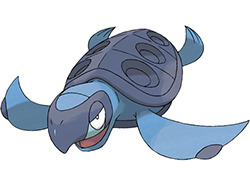
To be completely honest, I constantly forget Tirtouga exists. I think it's because it's Just A Turtle; there's no real clear theme at this stage, and there's not really anything about the design that sticks out other than the lovely gray and blue color palette.
Part of the problem is that while Tirtouga and its evo are based off of extinct giant turtles (Protostega and the massive Archelon, respectively), turtles... you know, still exist in the modern day. And because they still exist, there are a lot of other turtle and tortoise 'mons, like the Squirtle line, Torkoal, Terapagos, the Turtwig Line, etc. Sure, it's technically the only sea turtle 'mon, but that's not enough to inherently differentiate it and make it interesting.
Given the direction the evo takes, I kind of would've liked to see more emphasis on the shell; make it giant and bulky relative to the body, make it extend up over the head, etc. It's nice enough visually, but it really needs something that would make it stand out.
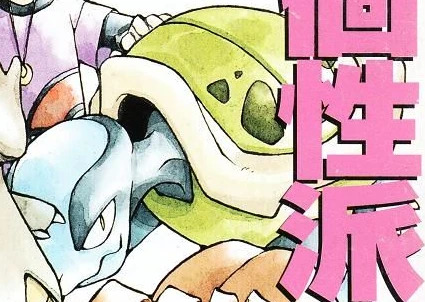
(Fun pointless fact: Ken Sugimori once drew an illustration for a magazine cover featuring a bunch of fake Pokemon-esq creatures, one of which (above) likely became Tirtouga later on. This is probably why it evolves from the "cover fossil". This fact is more interesting than the actual 'mon.)
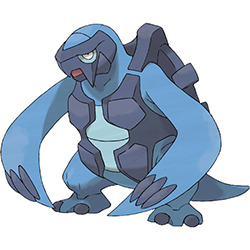
Carracosta has something going for it by standing up and becoming bipedal. This isn't unheard of for either turtle 'mons (Blastoise) or fossil 'mons (Kabutops), but it instantly gives it something distinct and visually differentiates it from its pre-evo.
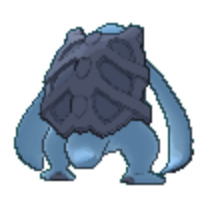
The other thing it has is a very unique shell design, which is segmented like ribs that stretch around the shoulders/legs and doesn't wrap over the stomach. It's likely meant to look like a bullet-proof vest, which is sort of random but it at least pretty cool looking. It strikes me as very classic Gen 1/Gen 2-ish design, despite being a Gen 5 'mon; it's something in the way it stands up and the bony yet somewhat organic shell design that does it.
My only nitpick here is that the ridges on the flippers look out-of-place, as that shape isn't shared anywhere else in the design. It feels like it needed to reuse the bulkly polygonal shapes from the front "vest" to create a pair of brass-knuckle like covers that wrap around the entire flipper. Otherwise, this one's pretty solid.
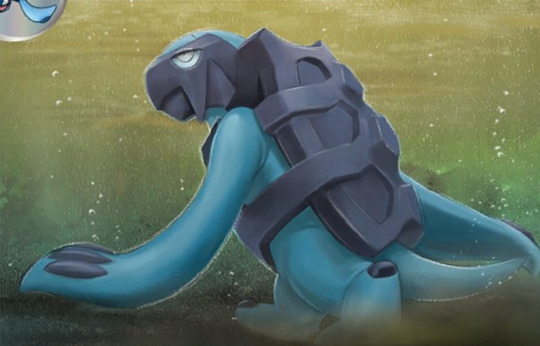
Overall, Tirtouga is too generic for its own good, but Carracosta's pretty neat and has a solid design. There could be room for regionals down the line, if you assume the line adopted to other regions before dying out originally.
50 notes
·
View notes